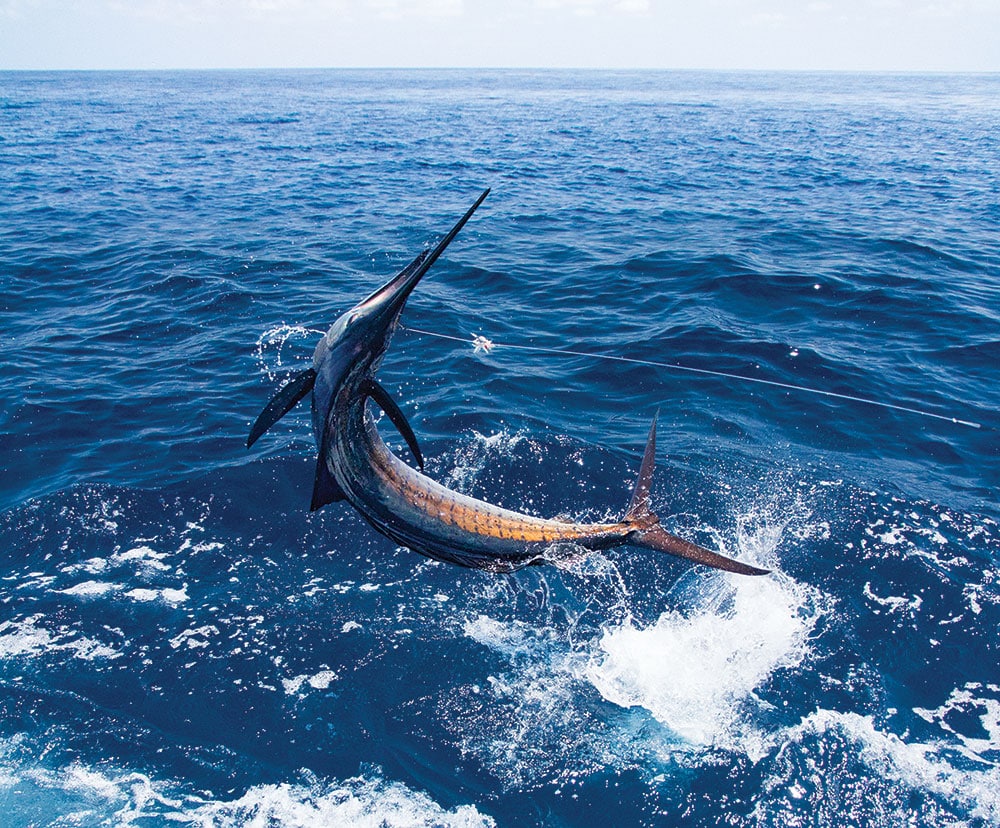
As offshore days go, this one started out looking pretty good. Thirty-five miles off of Quepos, we found customarily calm Pacific waters, and half an hour after we put out the trolling spread, we had our first sailfish. Ten minutes later, we had another and, after trolling 20 minutes more, a third. Then we paused.
Capt. John Mumford, running the 37 Ocean, Billfish, and owner Matt Feinstone compared notes, and mates Christian del Gato and Mario Cubillo concurred: With our third sail, Billfish had just tallied 1,000 billfish releases over the January-to-March, 50-day fishing season.
John LaGrone, a notorious high-numbers captain in his own right, and I had joined them for their final day of the season and their landmark tally. It had already been a great season for the crew and a fine last day, but that was about to take a back seat to the action we were in for.
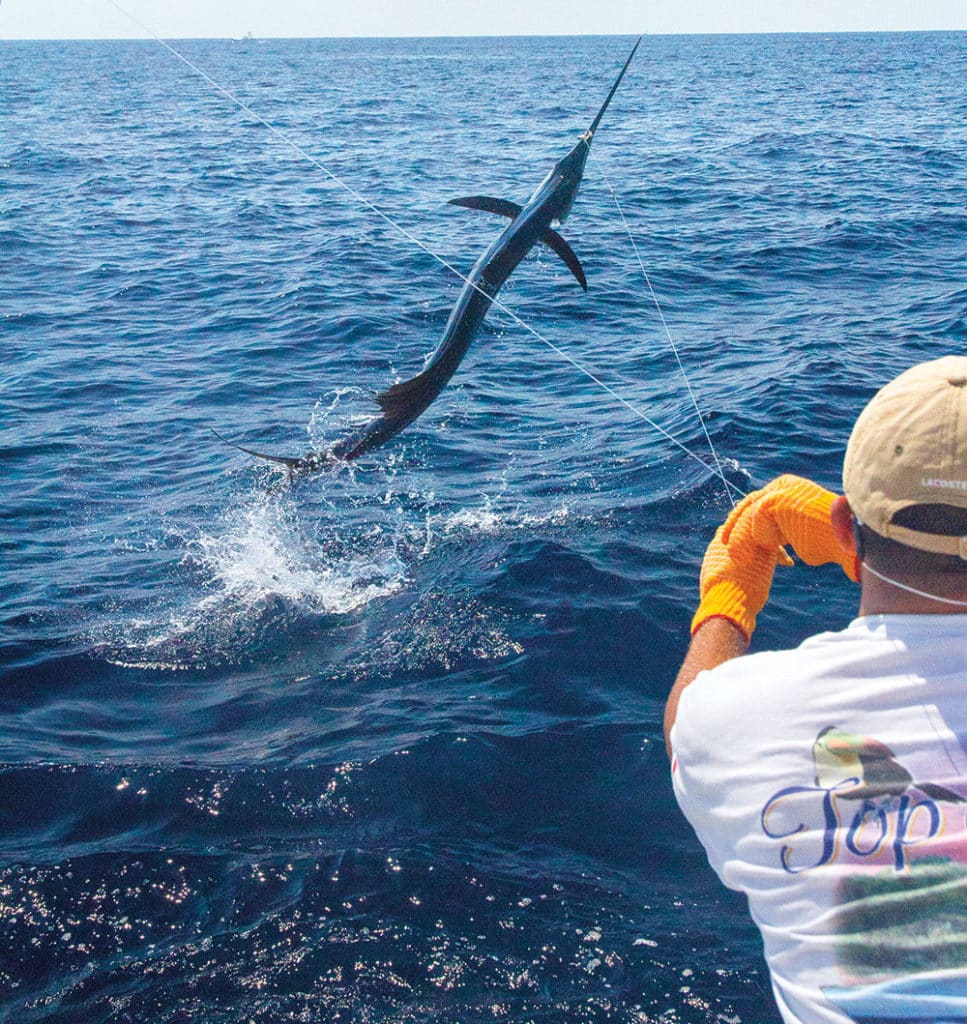
Dialed In
Back into the water went the baits: Mumford’s trolling spread consisted of a mix of teasers and swimming ballyhoo. Flat lines pulled baits off the transom corners, while the short outrigger lines pulled teasers. Ballyhoo were set on the long riggers and way back on a shotgun line from the flybridge. A pair of dredges ran on each side, just behind the first wave off the stern, from a pair of Lindgren-Pitman electric reels.
We loped around, trolling generally farther offshore and to the south looking for fish, and we posted about a dozen sailfish releases in the morning, plus a couple of hefty dolphin. All the while, Mumford continued to hunt for birds, bait or free jumpers.
Unlike other stretches of the Central American Pacific coast, the offshore grounds off Quepos lack the deep canyons, seamounts and other bottom structure that create rips and upwellings where bait and predators congregate. In 3,000 feet of water, it’s currents, flow and temperature that dictate the aggregations of bait and, subsequently, the presence of predators, Mumford explained. That requires hunting, which is what Mumford is especially good at.
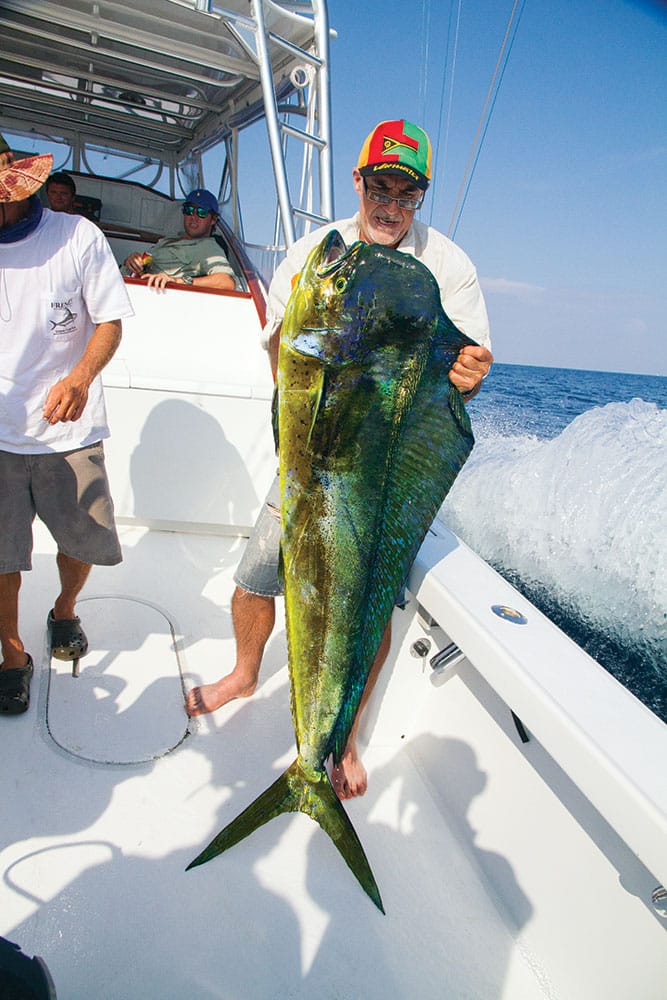
We’d meandered quite a ways offshore before a noticeable number of birds indicated we were getting warmer. Shortly after lunch, we hit the jackpot. Mumford had found small flocks of brown-fronted boobies sitting on the surface. Trolling through the scattered birds, we watched as they occasionally put their heads in the water, evidently looking at baitfish below them, just out of reach. They were waiting for the sailfish to push the bait to the surface.
Minutes later, that’s precisely what happened. Then the boobies took to the air, and it was showtime. As the sailfish pushed the bait to the surface our lines started going off, and any semblance of routine — hook up, clear the other lines, fight and land the fish, redeploy the spread — vanished as the crew adapted to what essentially became nonstop fish fighting.
The only break in the action seemed to be the few seconds after a knockdown, when the circle-hook rigs demanded a long free-spool and a slow, measured engagement of the drag to set the hook in the corner of the fish’s mouth.
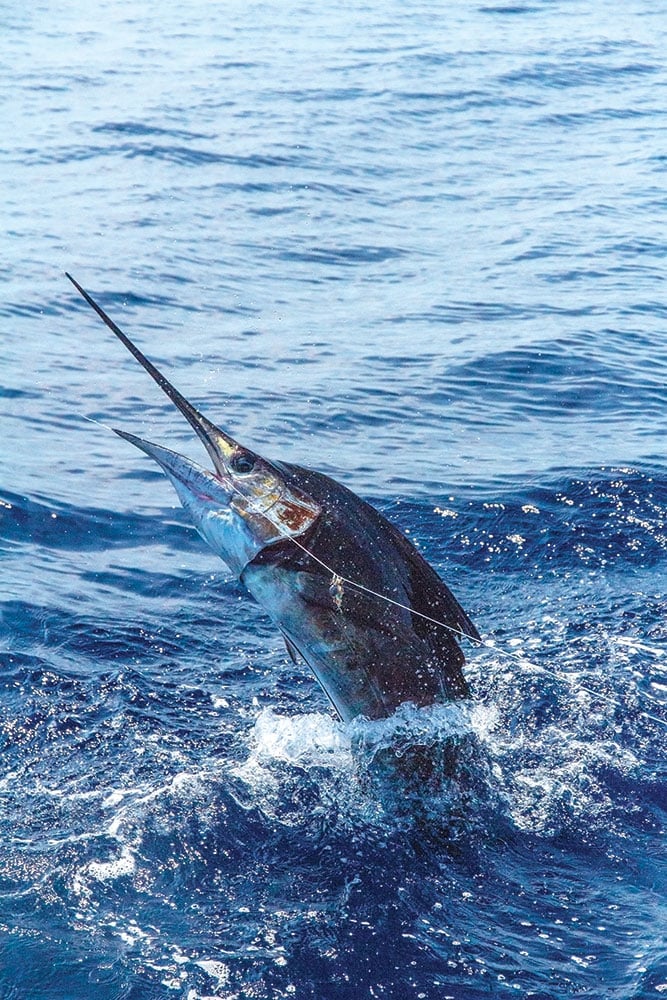
Doubles Plus
As the action heated up, Mumford and crew maintained a practiced level of composure. With every hookup usually came a second, often a third, and on a couple of occasions four fish at once peeled line toward the horizon. Mumford had del Gato and Cubillo clear the lines on the side of the hooked fish, then he swung Billfish in a wide circle around the fish as it made its first run-and-jump dash.
Meanwhile, lines on the outside of the circle stayed in the water. Dredges were brought in. The electric reels mounted in the forward cockpit covering boards made handling the dredges a simple routine. What wasn’t simple was handling so many fish at once. “I had to come out today to see if I can still do what I’m always telling other people to do,” LaGrone remarked, as he let a fish run for the horizon, waiting for del Gato to release two other hooked sails so he could bring his to boat-side.
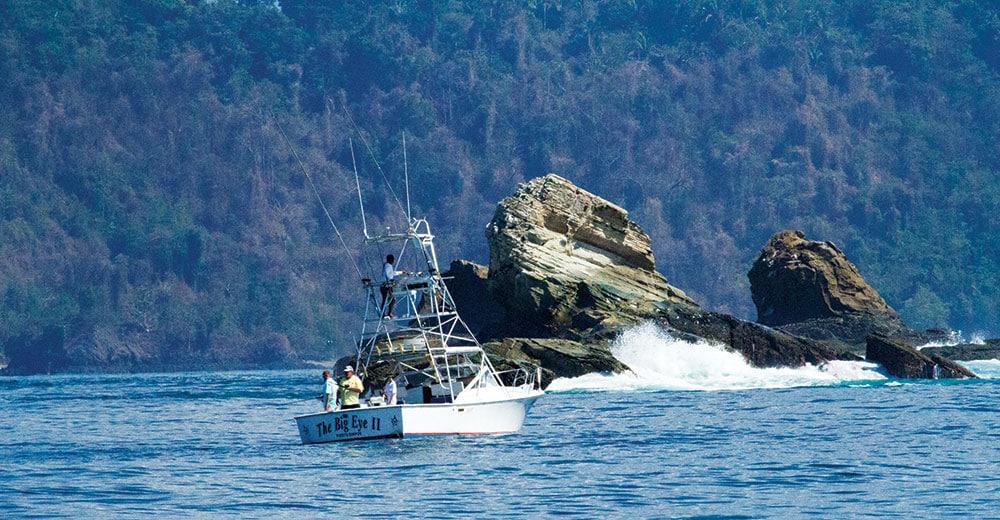
No Stopping Now
By mid-afternoon, we’d been joined by the local fleet. Most of the boats were on fish, but we’d gotten a jump on them, and Billfish was red-hot. Free jumpers popped up alongside our hooked fish, and it was tough to tell which fish we were fighting. It seemed there were sailfish bouncing around all over the ocean. At one point, Feinstone stepped to the transom and called a halt.”Hold on! Let’s just stop a minute,” he said, as if that could bring some order to the pandemonium.
But the crew wasn’t having it. They’d tuned their routines over the course of a successful season, and, sensing a record day in the making, they didn’t want to slow down now. They scarcely broke stride. “What’s going on here?” Feinstone groused, as he jumped on a rod that had just been hit. “This used to be a dictatorship. Now it’s turned into a democracy.”
Then we ran out of bait. Mumford radioed a nearby boat, which soon threw a couple dozen ballyhoo overboard in a white garbage bag for us to pick up. It didn’t take us long to go through the extra supply, as the number of sailfish releases climbed. With the bite showing no signs of stopping, Mumford again prevailed on another boat for more bait. The fireworks continued until we ran out of bait again just before we ran out of daylight. By the time we turned north toward the dock, we’d boxed four dolphin to 40 pounds and posted a new marina record with 64 sailfish released in a single day.
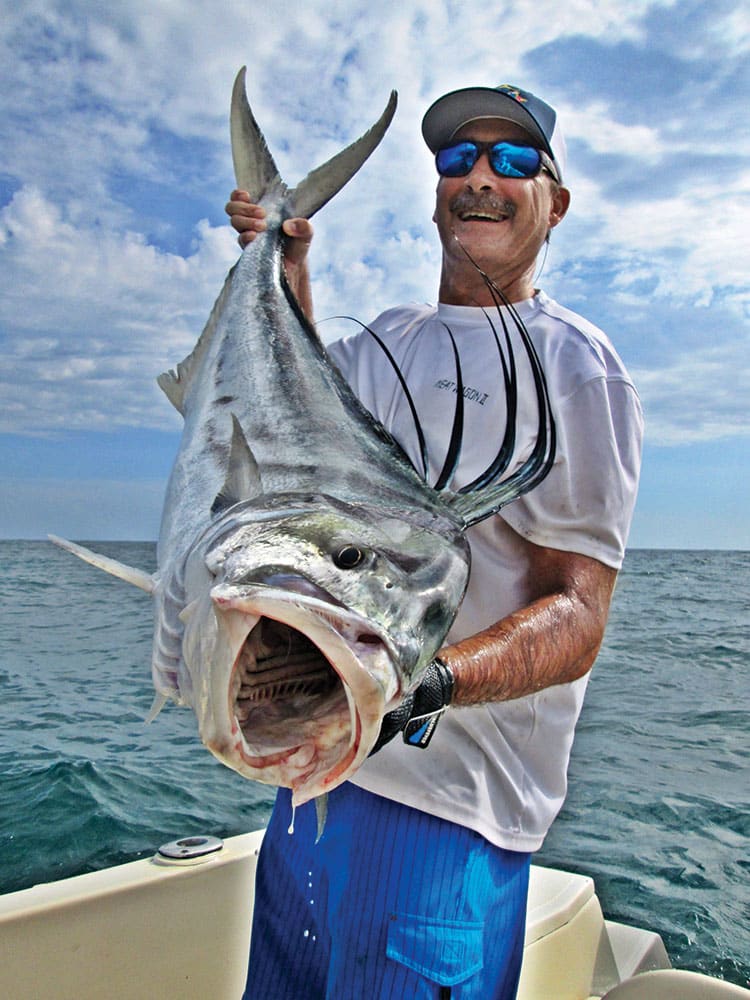
Inshore Interlude
If you can get your attention off billfish, Quepos inshore waters also offer world-class fishing in a spectacular setting. River mouths draining the coastal plain of the Cordillera de Salamanca that forms the backdrop to Quepos are renowned for their snook. This stretch of coast lays claim to several world records, including the 57-pound, 12-ounce Pacific black snook caught in nearby Rio Naranjo. Additionally, the combination of rocky coastline set with miles of undeveloped beach offers ideal habitat for another regional favorite: roosterfish, a powerful and acrobatic species known for its affinity for big splashy plugs and flies.
A morning spent chasing both snook and roosters a short run down the coastline from Marina Pez Vela only hinted at the wealth of possibilities inshore and left a lot of opportunity untapped, and plenty of reasons to return and explore miles of beach where roosterfish mix with snook. Roosters favor rocky bottom in 40-foot depths, as well as the surf. Pulling them off the backs of the breakers along the beach is a singular experience.









